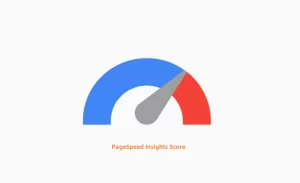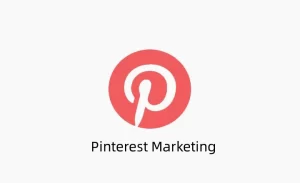Twitter has become a powerful platform for businesses to connect with their target audience, build brand awareness, and drive traffic to their websites.
With over 368 million monthly active users and 500 million tweets shared daily, Twitter offers immense opportunities for businesses to showcase their products and services.
In this blog post, Dolma will explore the step-by-step process of leveraging Twitter for effective marketing strategies that generate qualified leads and boost your business.

What is Twitter Marketing?
Twitter marketing is the process of promoting your brand and its products or services through the platform. It involves developing a well-defined social media marketing strategy to create and publish content that resonates with your target audience.
Effective Twitter marketing goes beyond posting content; it requires active engagement and interaction with your followers. As Twitter is a conversation-based network, it’s essential to foster a two-way dialogue by replying to tweets and direct messages.
A successful Twitter marketing strategy may also include advertising on the platform. This involves delivering targeted ads or promoted tweets to a relevant audience. Later in this guide, we’ll delve into the specifics of Twitter advertising.
Regardless of your approach, it’s crucial to align your Twitter marketing strategy with your business goals and the unique style and culture of the platform.
Why Twitter Marketing Matters

Twitter provides businesses with a direct line of communication with their target audience. It allows you to engage with your customers, build brand loyalty, and increase brand visibility.
With the right Twitter marketing strategy, you can reach a wider audience, generate leads, and drive conversions.
Whether you’re a startup looking to establish your brand or an established business aiming to expand your reach, Twitter marketing can play a crucial role in your overall marketing strategy.
Creating a Twitter Business Profile
To kickstart your Twitter marketing journey, the first step is to create a well-optimized Twitter business profile. Your profile plays a crucial role in attracting followers and getting your tweets the exposure they deserve.
Here are some useful tips to consider while creating your account:
Display Image and Username
Use your official company logo as your profile picture to maintain consistency across all your online platforms. Ensure that your username reflects your brand or company name to avoid any confusion.
Twitter Bio
Craft a concise and compelling Twitter bio that summarizes your business in 160 characters. Be specific and highlight your unique selling points to grab the attention of potential followers.
Website Link
Include links to your website and blog in your profile. This not only drives traffic to your domain but also adds credibility to your profile.
Optimize with Keywords
Integrate relevant keywords in your bio to make your business profile more discoverable. Choose keywords that align with your brand and resonate with your target audience.
Additional Images
Add background photos that align with your brand concept and color palette. These images can be changed according to your marketing strategy and promotional activities.
By optimizing your Twitter profile, you create a lasting impression on profile visitors and enhance your branding efforts.
Building a Twitter Community
Building a strong Twitter community is essential for effective Twitter marketing. Connect and engage with accounts that are relevant to your niche, including customers, colleagues, competitors, and influencers. The goal is to establish meaningful relationships and foster engagement.
Here are some tips to build your Twitter community:
Follow Relevant Accounts
Follow accounts that are relevant to your brand and industry. This helps you stay updated with the latest trends, engage with like-minded individuals, and expand your network.
Engage with Others
Mention people in your posts when retweeting and comment on tweets that are relevant to your niche. This shows that you are actively engaged and add value to the conversation. Don’t forget to promote your brand occasionally by tweeting about your products or services.
Provide Value
Share useful and interesting content that resonates with your audience. This can include blog links, images, videos, GIFs, and quotes. By providing valuable content, you establish yourself as an authority in your industry and attract more followers.
Start Conversations
Initiate conversations by participating in Twitter Chats and encouraging others to respond. This helps in building interactions and fostering engagement with your followers.
By actively building your Twitter community, you create a network of engaged followers who are more likely to interact with your brand and share your content.
Sharing Interesting Content
Twitter is a fast-paced platform that demands a constant stream of content. To keep your audience engaged, it’s important to share a variety of interesting and relevant content.
Here are some tips to make your tweets stand out:
Curate Content
Content curation is a great way to consistently share valuable content without spending too much time creating it. Find and curate content that aligns with your brand and audience’s interests.
Don’t forget to add visual elements, such as images or videos, to make your tweets more attention-grabbing.
Promote Products and Services
Use Twitter to promote your products and services strategically. Share images, videos, or testimonials that engagingly showcase your offerings.
During special occasions or festivals, include discount offers in your Twitter marketing strategy to drive sales opportunities.
Be Creative
Think about your audience when crafting tweets and share creative and engaging content. Experiment with different formats, such as videos, quotes, and product images, to keep your audience interested and entertained.
By sharing a variety of interesting content, you keep your audience engaged and increase the chances of your tweets being shared and retweeted.
Engaging Proactively with Others
Engagement is key when it comes to Twitter marketing. Actively participate in conversations, respond to mentions, and engage with your followers.
Here are some tips for being actively engaged on Twitter:
Respond to Interactions
Always respond to people who favorite, reply, or follow your account. This shows that you value their engagement and helps in building a positive brand image.
Engaging with your followers also provides you with valuable feedback and insights.
Monitor Twitter Activities
Keep an eye on what others are doing on Twitter, especially your competitors and industry influencers. Observe their strategies, the content they share, and the responses they receive. This can provide you with valuable insights to improve your own Twitter marketing efforts.
Start Conversations
Initiate conversations with your followers and encourage them to respond. Twitter Chats are a great way to engage with your audience and build a sense of community. By starting conversations, you create opportunities for meaningful interactions and increase your brand visibility.
By actively engaging with others on Twitter, you foster a sense of community, build brand loyalty, and increase the visibility of your tweets.
Using Hashtags Effectively
Hashtags play a crucial role in Twitter marketing. They help organize tweets around specific keywords or topics and make your content more discoverable.
Here are some tips for using hashtags effectively:
Choose Relevant Hashtags
Use hashtags that are relevant to your tweet and brand. Research popular hashtags in your industry and choose the ones that are followed by your target audience. This helps you reach a larger audience and increases the chances of your tweets being seen and shared.
Create Branded Hashtags
Consider creating branded hashtags for your business. Encourage your followers to use these hashtags when sharing content related to your brand. This not only helps in promoting your brand but also creates a sense of community among your followers.
Limit Hashtag Usage
While hashtags are important, it’s crucial not to overdo it. Use two or three hashtags per tweet to avoid cluttering your content. Focus on quality rather than quantity when it comes to hashtags.
By using hashtags effectively, you increase the visibility of your tweets, reach a wider audience, and encourage engagement with your content.
Scheduling Tweets and Analyzing Performance
Consistency is key in Twitter marketing. To maintain an active presence on the platform, you need to tweet regularly. However, tweeting multiple times a day can be time-consuming.
Here are some tips to make it easier:
Optimize Tweet Timing
Research the best times to tweet based on your target audience’s behavior. Experiment with different times of the day and track the engagement metrics of your tweets. This helps you identify the optimal times to maximize reach and engagement.
Use Scheduling Tools
Take advantage of Twitter marketing tools, such as SocialPilot, to schedule your tweets in advance. This saves you time and effort, allowing you to plan and schedule tweets ahead of time.
Scheduling tools also provide insights into the performance of your tweets, helping you identify which tweets are generating the most engagement.
Analyze Performance Metrics
Regularly analyze the performance metrics of your tweets. Look at metrics such as likes, retweets, and click-through rates to understand which tweets are resonating with your audience.
Use this information to refine your Twitter marketing strategy and optimize your content.
By scheduling tweets and analyzing their performance, you maintain a consistent presence on Twitter, improve engagement, and refine your marketing strategy based on data-driven insights.
Twitter Marketing Tools
To streamline your Twitter marketing strategy, consider utilizing the following tools:
- TweetDeck: A free management tool with a real-time, customizable interface. It allows you to track mentions, hashtags, and keywords from multiple feeds and accounts.
- Buffer: A user-friendly platform for scheduling tweets, tracking real-time performance, and measuring engagement.
- Sprout Social: A comprehensive tool for managing your Twitter account, scheduling tweets, tracking progress, and measuring performance. It offers a unified Smart Inbox for managing customer relationships.
- Hootsuite: A popular Twitter management tool that allows you to schedule tweets, track mentions and hashtags, and analyze performance.
- BuzzSumo: A tool for identifying trending Twitter content, discovering influencers, and gaining insights into industry trends. Use it to refine your Twitter marketing strategy and create better content.
- Canva: A graphic design tool for creating visuals, such as custom graphics and infographics, to enhance your Twitter posts.
Summary
Twitter marketing offers businesses a unique opportunity to connect with their target audience, build brand awareness, and drive traffic to their websites.
By creating an optimized Twitter business profile, building a strong community, sharing interesting content, engaging with others, using hashtags effectively, and analyzing performance metrics, you can leverage Twitter to its fullest potential.
Remember to be authentic, provide value to your audience, and stay consistent in your efforts. With the right strategy and tools, Twitter can become a powerful platform for growing your business and generating qualified leads.
You may also want to read:


